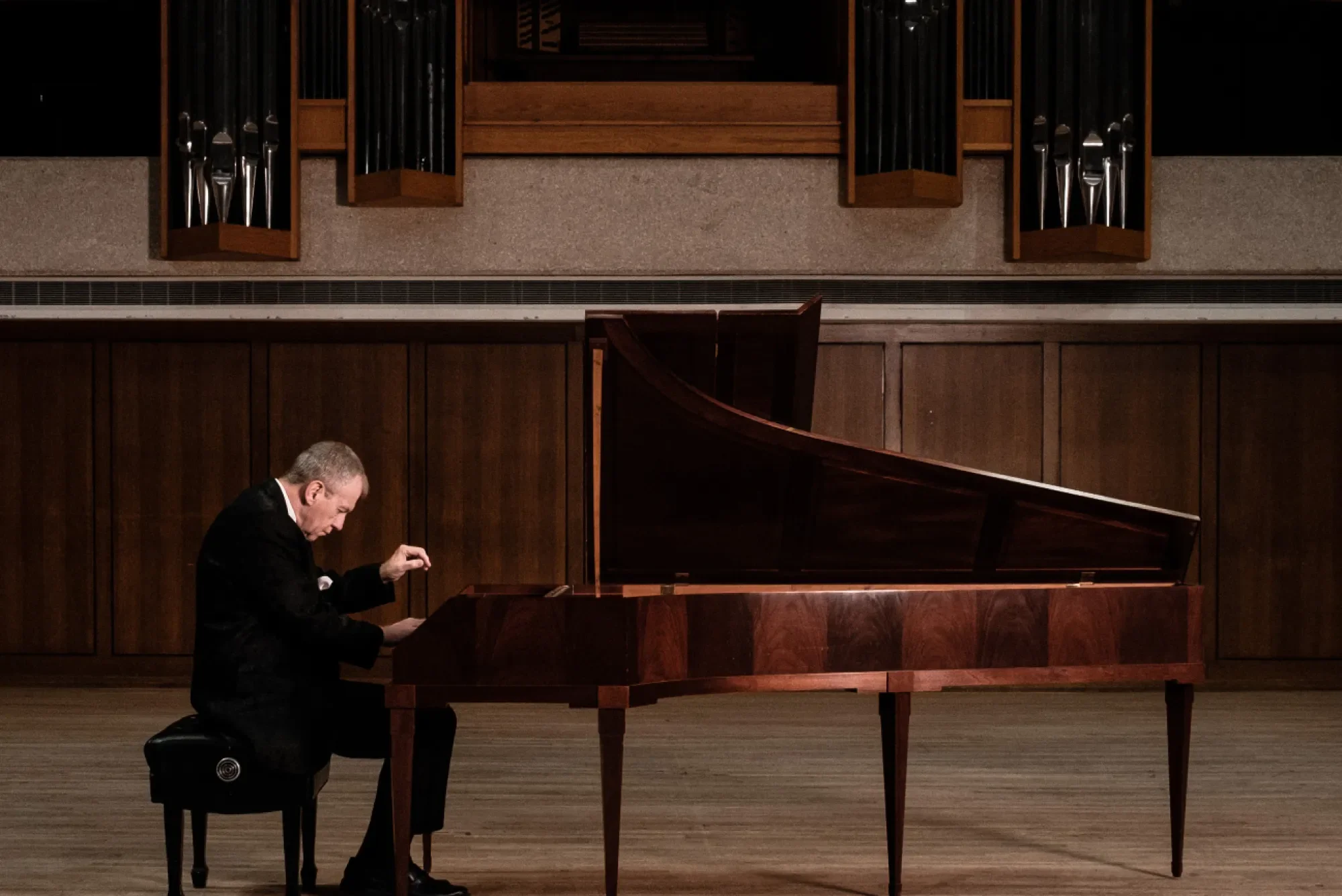January 31, 2020

Anton Nel in Bates Recital Hall; photo by Nathan Russell
Professor Anton Nel’s first professional opportunity to perform on a forte-piano came six years ago when his friend, Keith Womer, invited him to play Haydn and Mozart concertos with La Follia Austin Baroque, an ensemble dedicated to period-appropriate performance practices. "Keith thought that my particular style of playing and love of Classical-period repertoire might be a good match for the forte-piano, but I don’t think he or I realized to what extent this bug would bite.” Nel had been an avid harpsichordist since age 14, and always had a keen interest in period keyboard instruments but — apart from playing casually — had no formal experience with fortepianos.
“My encounter with the instrument was love at first sight, and opened a whole new musical chapter in my life,” says Nel. He now spends part of every year studying the instrument and playing concerts on it: recitals, concertos and chamber music. “The whole experience has been incredibly enriching and rewarding.”
At its most basic definition, a fortepiano is simply an early piano. More typically, however, the term is used to refer to the late-18th to early-19th century instruments for which Haydn, Mozart and the younger Beethoven wrote their piano music. “It’s important to remember that the fortepiano is the predecessor of the piano as we know it today, so a lot of features — the building materials, action, range, stringing, pedals — are still in the formative stages,” explains Nel.
“Upon first hearing the sound, the fortepiano will appear much smaller than that of a modern concert grand, though it has quite a big and expressive dynamic range.”
The keys of a fortepiano are struck with leather covered hammers, and the sound changes slightly through the various registers. Nel describes it as “very rounded and singing in the middle register, then clear, if a little buzzy in the bass, and beautiful and silvery in the upper register.” Beginning in Beethoven’s lifetime, the fortepiano experienced a steady evolution that culminated in the late-19th century with the modern grand piano. The earlier forte-piano therefore became obsolete, and was absent from the musical scene for many decades.
Following increased interest in historically-informed performance, the forte-piano was revived in the 20th century; the instruments are now constructed exclusively in specialist workshops.Nel’s personal instrument is a five-octave Viennese forte-piano modeled after a 1791 Könnicke, built by Robert Smith in 1981. In turn, the Butler School owns a fortepiano built by Paul McNulty — now one of the most important makers of period keyboard instruments in the world — as well as a five-octave fortepiano after Anton Walter from the 1790s; both instruments are copies of pianos that Haydn, Mozart and Beethoven would have played on. Other important structural differences: Fortepianos have a sustaining lever, similar to the right-side pedal on a modern piano, as well as a moderator (or soft pedal) operated by one’s knees.
“The keys are shorter and slightly smaller than on a modern piano and the action — to a pianist —would feel on the ‘shallow’ side and quite light,” Nel says.
The five-octave instruments are ideal for C.P.E. Bach, Haydn, Mozart, Clementi and early Beethoven, and their use helps musicians more directly explore the composers’ intentions. “I think all pianists should have the opportunity to play a fortepiano, since it instantly clarifies many ‘issues’ that arise when playing Classical period repertoire on the modern piano: articulation, balance, use of pedal and more.”
You can see Anton Nel’s all-Beethoven solo recital in Bates Recital Hall at the Butler School of Music on February 16, 2020; he plans to play half of the repertoire on forte-piano. Advance concert tickets and more info available here!

